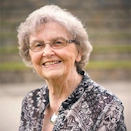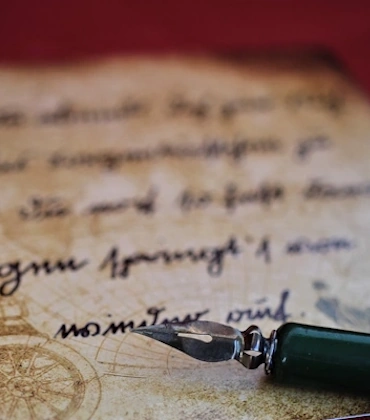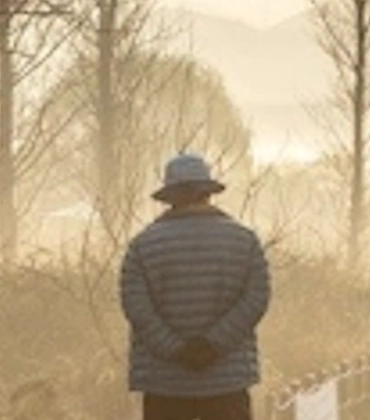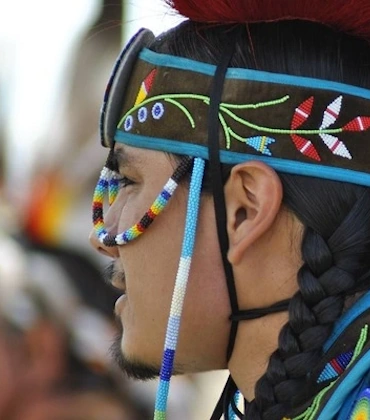
Mary J. Rankin: Missionary to a Melungeon Community
Was Mary Rankin aware that the mountaineers she was drawn to serve were viewed as outcasts by the white population in the county where they lived? Although Mary never used the term Melungeon in referring to the people she served, others did. Curiosity about their ancestral origin has led to widespread speculation. Were they descendants of settlers left behind in what became the ill-fated Lost Colony? Did its survivors journey westward, seeking the friendship of, and eventually marrying, Native Americans, thus launching this mysterious clan? Or did survivors of a Portuguese shipwreck on the North Carolina coast march inland seeking food and shelter discover friendly Native Americans, with whom they married?
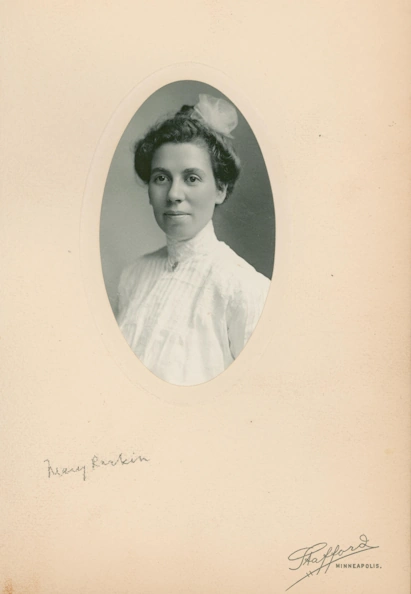
More recent science which allows DNA testing adds still another dimension to the racial makeup of these remarkable people. Such tests coupled with certain diseases common among the Melungeons, such as sarcoidosis or Mediterranean fever, Behcet's Syndrome, and Machado-Joseph Disease, indicate the possibility of common ancestors from countries located along the Mediterranean Sea.
Other theories include Portuguese, Turkish, Sephardic Jewish, tri-racial, Moorish, and Roma as possibilities for the Melungeon genetic line (Scott Withrow, personal communication, July 7, 2023). Vardy has long been the home of a mixed-race people often ridiculed by their white neighbors. Melungeon children were barred from attending white schools, just as were other mixed-race people, such as the Black Dutch, the Brass Ankles, and the Chestnut Ridge People.
In the 1800s a Tennessee poet, Miss Will Allen Dromgoole, visited Vardy to study the community and wrote two articles about her experience, which were published in the Arena Magazine in 1891. Miss Dromgoole noted the Melungeons reverence for the Christian cross. She also observed that Melungeons buried their dead above ground in a fashion like that of burial sites in the Southwest. Miss Dromgoole concluded that Melungeons were descendants of the Portuguese. Later, she changed her mind and declared Melungeon ancestors were members of the Black race. Research into the mystery of their origin persists. The Melungeons have explored the possibility that they descended from survivors of the lost Roanoke colony. Modern DNA testing reveals their ancestry is in common with citizens living in communities bordering the Mediterranean Sea, including its Jewish population.
In the 1890s, the Presbyterian Board of National Missions assigned missionaries to serve in remote mountain communities in the South. One missionary, Mary Jemima Rankin lived with the mountaineers in Vardy, Tennessee, but just what path brought her there? Her story commenced in Scotland.
************
Mary's father, Joseph Rankin, hustled his family onboard the S.S. Scandinavian in the port of Glasgow to embark on a journey to the United States. Depending upon the weather, his voyage in the steam-powered vessel across the Atlantic Ocean would last from two to three weeks.
A government appointed inspector checked all ocean vessels, as well as crew and passengers prior to a final departure. Such inspections delayed commencing the journal, and, once the crossing began, weather conditions controlled both the comfort and the safety of the travelers. Joseph was aware of the dangers facing transatlantic travelers, such as fires and even shipwrecks. Other ships steaming across the Atlantic had gone missing, leaving behind mysteries unsolved to this day. Exposure to diseases was also prevalent for passengers on board those ships.
But Joseph decided that moving his family to faraway Minnesota was worth risking danger and discomfort. Once his family had been told of the move, their preparations commenced. At first Mary and her siblings shed tears as they came to grips with leaving their homes, friends, and relatives forever, but eventually the youngsters became excited at the prospect of living in a new land.
Joseph's wife, Jemima Aiken Rankin, gave birth to their fourth child Ruth in December of 1883. Caring for a baby only a few months old while crossing the ocean and then moving overland to faraway Minnesota could not have been easy for her. She depended upon Mary, her firstborn, to help. Indeed, looking after her younger siblings became Mary's task for years to come, a responsibility that prepared her for future duties in the classroom.
On May 22, 1884, the ship docked safely in the harbor near Boston, Massachusetts. Were there friends or relatives to meet the Rankins when they deboarded the Scandinavian? Had Joseph been able to arrange transportation from Boston to Minnesota in advance? Were the Rankins treated to a special meal at the Union Oyster House? Were vendors selling fruit? Was a tavern nearby? By some means, Joseph and his wife fed their children and found a place to rest before moving on to Minnesota.
During the mid-1880s the United States was experiencing The Golden Age of railroads, and Rankin traveled with his wife and children by train at least part of the way to Minnesota, where he rented a farm near a community close to the homes of other Scotsmen.
Just why did Joseph N. Rankin move far from home to a remote place? Did his wife Mary object? Did the couple quarrel about relocating in a distant settlement? If so, heated discussions gave way to acceptance. Joseph weighed the pros and cons of such a decision and moved his family. But why?
Although no written record reveals Joseph's reason for relocating his family, religion may have played a role. The Rankins were active members of the Presbyterian Church, which had received support from the Church of Scotland for a while, but later its members persecuted, discriminated against, and threatened the Presbyterians. Most Scotsmen were also dealing with financial distress at that time. Perhaps living with the threat of persecution and the prospect of near-bankruptcy troubled Joseph and gave him reason to relocate.
Once Rankin settled in Minnesota, he invested in providing an education for his children, which included preparatory classes and eventually a college degree. Such an education enabled the Rankins to become leaders in their church. Mary graduated from Macalester Preparatory School in 1899, and earned a bachelor's degree from McAlister College near St. Paul, Minnesota, in 1903. Later she attended Columbia University and received a masters degree (Columbia University Archives). Today's archivist at Columbia University, Jocelyn Wilk (April 27, 2023) said that the 1921 graduate lived in Sneedville, Tennessee, and was involved in social work. Mary's social work included her service as a missionary teacher.
Convinced that she was called to serve the Lord in full time Christian service, Mary applied to the home mission board of the Northern Presbyterian Church. On her application she explained: I believe that the Lord has called me to the Mountaineers and has been specially preparing me throughout my whole life for work among them (cited by Overbay, DruAnna Williams, Windows on the Past, 2005, p. 25).
Not only did Mary Rankin earn college degrees, but she also became a registered nurse. Her first assignment as a missionary was to serve in Ozone, Tennessee, but she left there to earn her masters degree at Columbia. In 1910, at the age of 34, she was reassigned to Vardy, Tennessee. The mountaineers there were called Melungeons by their white neighbors. The community despised that name, and because of their dark skin, they lived with on-going discrimination and mistrust. Mary Rankin simply called the people she served “Mountaineers.”
Mary announced that she would commit her life to Gods service as a “Bible reader, teacher, and farmer” (p.32). In Vardy Mary filled many roles. She taught Sunday School lessons to adults and children, assisted with church activities, and taught children in the primary grades. Mary, in partnership with the Presbyterian minister, also set up evening classes for adults to learn to read and write. Along with other staff members, she established a school lunch program, with assistance from members of the community who donated vegetables. The Vardy pupils enjoyed hot and nutritious meals.
Mary invited children and young people into her cottage to sit at the kitchen table while she explained the importance of salvation and encouraged them to be saved. She stressed that the crucifixion of Jesus paid for their sins and explained that his death on the cross provided justification for each believer, that by asking Jesus to become their Savior, it was as if they had never sinned.
Mary assured each child that all that was needed to be saved for all eternity was simply to believe that Christ had died on their behalf. The dedicated missionary believed the most vital role of her career was explaining the plan of salvation to her beloved mountain children. One of those pupils, Margaret Nevels, shared her memory as a twelve-year-old sitting at the kitchen table in Miss Rankin's cottage. Mary encouraged her to be saved by accepting Jesus as her Savior and urged her to be baptized (Ibid., p. 34).
Not only was Mary dedicated to the spiritual development of her students, but her training as a nurse enabled her to educate the Vardy community about sound health procedures. She taught them about the importance of sanitation in preventing disease. She also kept a watchful eye on each of her young charges. If she suspected that a child were undernourished, she provided healthy food. She instructed the mountain women how to prepare nutritious meals as a means of preventing malnutrition. One former student recalls that Mary made him stop for two glasses of milk on his way to school because he was undernourished (Overbay, DruAnna Williams, Windows on the Past, 2005).
Another way Mary protected the health of the community was by providing both prenatal and postnatal care. Assuming the role of a midwife, she delivered babies when no doctor was present. At school she checked little heads for any sign of lice, meticulously inspected their fingers for the itch, and was always alert for signs of pinkeye. She, along with the mission leader, Pastor Leonard, checked for ringworm, hook worms, and pin worms. They issued toothbrushes and toothpaste to each child. Before that, youngsters chewed a sassafras twig or a willow stick to clean their teeth. Nurse Rankin vaccinated the children for smallpox and gave them iodine pills as well as cod liver oil. As adults, her former students still winced at the memory of those doses of cod liver oil. That treatment was not one of their favorite memories.
Tennessees Health Board licensed Mary to dispense medicine. She and Pastor Chester Leonard established clinics at both their church and the school. They believed such clinics would provide early diagnosis of contagious diseases and aid in preventing their spread. When the infamous Flu Epidemic, also known as Spanish flu, hit Vardy during World War I, Mary provided around-the-clock care for the afflicted. During the pandemic, she rode on a borrowed mule from house to house to treat the ill. Somehow the success of her treatment reached Dr. Otto of Johns Hopkins University, who visited Vardy to observe her methods (Overbay, p. 34). When a patient died, Mary prepared the body for burial by bathing and dressing the deceased. Often the family requested that she speak at the funeral, and she did. She looked after her communitys needs from the classroom to the cemetery
Vardy residents erected a bungalow for Marys use in 1910, but the great tornado struck during the afternoon and evening hours of March 14 downing trees and destroying property, including Mary's cottage. It was one of the worst storms in Tennessee history. The following excerpt is Pastor Chester F. Leonard's account of the event in his annual report to the mission board:
On the night of March 14, the great windstorm blew down our houses, barns, and sheds, uprooted trees and tore down fences, killing two of the people of our community, Lily Sexton and Emmett Moore. For about a day we sat back rather stunned, and then we went to work. The school was damaged; Miss Rankin's house had to be entirely replaced; and other damage to our property added to the difficulties caused by the closing of the banks (Overbay, p. 73).
Throughout its path of destruction, that tornado created unimaginable property loss. Fourteen hundred homes, 16 churches, 36 stores, five factories, and four schools were damaged or destroyed. Four other deaths resulted: two in a store in Bellwood and two at a house near Lebanon. This official account of the 1933 disaster does not include the deaths in Vardy. Perhaps its remote location is the reason for that.
How did the citizens of Vardy seek protection during the storm? Did they hide in root cellars, in basements, or did they assemble in the Presbyterian church and school? To have escaped the power of its devastating winds with the loss of property may have prompted a community meeting to offer prayers of thanks.
As stated previously, whenever a death occurred, Mary took part in dressing the dead, thanking the grave diggers, arranging funerals, and speaking at the church or graveside. Overbay (p. 23, 2005) relates an account of Mary's preparing the flower girls to take part in the funeral of Adelaide Horton. Mary gathered flowers and arranged bouquets for each of the youngsters. The flower girls clasped their garlands of blossoms as they marched proudly down the aisle to place them at the front of the church on either side of the casket. Then, after the service, the girls rose from their assigned seats, filed down the aisle, and stooped to retrieve their bouquets. Then, standing tall, the flower girls marched outside to the cemetery where each young lady carefully placed her flowers on the grave; then the girls walked back to the church, lined up at each side of the entrance until the bell rang to declare the service had ended.
As a teacher, Mary instructed the children in reading and writing. Her primary grade pupils proudly recited their ABCs in unison. She led them in memorizing Bible verses; their sweet voices invaded the halls as they recited John 3:16, Psalm 23, and Psalm 100. Mary often read Scripture to the youngsters in her sweet Scottish dialect. Her methods included classroom demonstrations; she carried plants and animals inside for her pupils to observe and to talk about.
During the winter months, Mary habitually prepared hot chocolate for her pupils. That was not a simple task: milk had to be boiled and cocoa added, along with sugar. Mary probably had the process down to a tee in those days long before packets of instant hot chocolate and microwave ovens became available. Drinking their delicious beverages comforted her pupils and created a pleasant experience which the youngsters would remember long after their school days.
Centenarian Ruth Jenkins Muhlbaurer, a Navy veteran who passed away on May 20, 2023, recalled the good times she had as a first, second, and then a third grader in Mary’s classes. She praised Mary rubbing her cold hands and feet to warm them after a long walk to school in frigid temperatures. Mary also vaccinated Ruth and her classmates. Fear of the dreaded needle was overcome in part as their teacher bragged on their brave example for the others waiting in line.
Not all behavior earned praise. Whenever pupils misbehaved by talking, moving around without permission, and especially by not listening, the teacher would smack their hand with a twelve-inch ruler. Troy Lee Williams, another Vardy student, declared that whenever students got into a fight or even a scuffle, they got a whippin with paddles or with switches (Personal communication, January 8, 2018). Writing on walls, on the furniture, or any place other than on a piece of paper was not tolerated (Margaret Williams Nevels, Personal Communication, January 9, 2018),
During her 97th year of living, Ruth told this author: Mary J. Rankin was loving, caring, and patient. The former sailor explained that the love of learning she received from her teachers at Vardy led to her attending high school at the Dorland Bell School in Hot Springs, North Carolina, and after she graduated, she enlisted in the U.S. Navy. Later, as a Navy veteran, Ruth worked for the U.S. Department of Labor.
Another memory treasured by Ruth about her school days at Vardy were the slideshows: I especially enjoyed the slideshow on the news each week. We had no electricity in those days, but the school had a dynamo. Watching those shows were exciting for the youngsters. There were no snow days, no hot lunches, no transportation. We had to spend two years in 8th grade─8A and 8B─ if we wanted to go to high school. School started in August, and we got out in March, on account of farming (Personal communication, January 11, 2018).Troy Lee Williams had fun on the playground tossing horseshoes, seesawing, and especially playing softball. He glows with pride when speaking of several blue ribbons he won,. However, he admitted that he did not enjoy being on the receiving end of a switch, an experience which caused him to flinch as he shared that memory (Personal communication, January 8, 2018). Both Williams and Nevels expressed their pride in being escorted as adults to the school museum located on the top level to see items collected and donated to their school from all around the world.
At school and at church, Mary rehearsed with each child assigned to take part in programs at Easter and Christmas. She trained them to project their voices and to speak with expression, emphasizing the appropriate words. Both parents and other community members enjoyed attending school events. Watching little and not so little ones perform delighted the community. Christmas celebrations became even more festive after Mary Rankin moved to the Melungeon community of Vardy, Tennessee. Trees were decorated and placed on display.
Mary lived near the school in a cottage built in 1920, which gave her access to the outside toilet at the Presbyterian Church. Her home had 4 large rooms and an attic. At times the attic provided accommodation for visitors. In her bungalow she visited with members of the community, dried many an eye of a distressed child, served milk and cookies to those who dropped by. Guests were frequently welcomed to chat, to share community concerns, and simply to get to know one another better.
Chester F. Leonard, the Presbyterian minister and leader of the mission, planted vegetables in the garden behind Mary's cottage. Mary had cited her willingness and her intent to become a farmer in the Lords work when she applied for missionary service. She frequently read journals about farming. Whenever she found useful information about gardening, she shared that material with local farmers. Farming continued to be one of her major interests.
One youngster tumbled to the ground while walking near Marys cottage; her brand new Easter dress was torn and stained with grass. Hearing the heartbroken child begin crying, the loving missionary rushed to the child, scooped her up in her arms and carried her to the cottage. There she comforted her, sewed the torn garment, washed and ironed her dress, and then walked with her to her home to explain all about the mishap with the childs brand-new dress. Then the loving parents hugged their little girl and spoke their own words of comfort. Marys actions were greatly appreciated.
Frequently, Mary traveled from Vardy and Newmans Ridge to speak in churches, religious gatherings, and at missionary conferences in Iowa, Indiana, and other Northern states. Newspaper accounts describe her as a popular speaker and her engagements as well-attended. When she addressed groups of Northern Presbyterians, she praised the mountaineers she served and shared their needs. Mary encouraged members of Northern churches to donate used clothing and other items for the poor in her community, which she distributed to her neighbors as needed.
She stored boxes of used items were stored in the attic of her cottage. Later she carefully examined each item and decided who would best benefit from its use. Members of the community commented about how welcome a winter coat or a pair of shoes were in the harsh winter months. Toys and household goods were also distributed, but only after Mary carefully determined just who would best benefit from owning it. Receiving a new coat often disappointed a child, who had his/her heart set on a doll or a baseball, but their teacher chose the item she deemed most appropriate for each child. And her decision was final.
Marys career as a teacher, a nurse, and a missionary enriched the lives of the Melungeons she served. She, in turn, was thankful for the blessings that came her way from the Melungeon community. All good things come to an end, and in 1943 Mary retired and moved to Winter Park, Florida. Winters there were comfortable, but Mary returned frequently to check on the Vardy community. She found it hard to stay away,
She lived for 99 years. Her death occurred November 24, 1975, at the Kershaw County Memorial Hospital in Camden, South Carolina. There she had been living with her sister, Edith R. Shrewsbury. In addition to Edith, she was also survived by her sisters Elizabeth Rankin of Orlando and Ruth Olson of Bellevue, Washington.
Her obituary reveals that she had received the Golden Deeds Award in Orlando for outstanding service to church and community. She was also recognized as a founder of the John Knox Presbyterian Church of Orlando (The Columbia Record, Columbia, South Carolina, November 25, 1975). According to one source, she was buried at Camden Forest Lawn Memorial Park Cemetery in South Carolina.
From Scotland to Minnesota to Florida to South Carolina, Mary Rankin served her communities and her God. Her life made a difference in the lives of others, and she achieved her goal of living a useful life in Christian service. Such a teacher and nurse and missionary deserves to be long remembered.
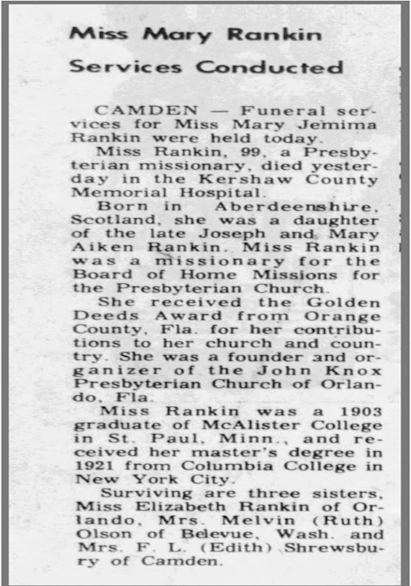
Works Consulted
Ball, Bonnie. The Melungeons. The Overmountain Press, Johnson City, TN 1992. “Crossing the Atlantic in Steerage – 1884 accessed June 20, 2023.
Esh, John. Archives Specialist, Macalester College. Documents/letters re Mary Rankin.
Johnson, Mattie Ruth. My Melungeon Heritage: A Story of Life on Newman’s Ridge. The Overmountain Press, Johnson City, Tennessee.
Mary Rankin Obituary. Kornegay Funeral Home Records 1930-1989, Camden, South Carolina by way of communication with Kris Blair, Reference Librarian, Transylvania Community Library, Brevard, NC.
Kennedy, N. Brent. The Melungeons: The Resurrection of a Proud People, Mercer University Press, Macon, Ga. 1997.
“Miss Mary Rankin Services Conducted,” The Columbia Record, Columbia, South Carolina, November 25, 1975.
Overbay, Druanna Williams. Windows on the Past: The Cultural History of Vardy, Hancock County, Tennessee Mercer University Press, 2021.
Savannah Logbook. accessed June 21,2023.Winkler, Wayne. Walking Toward the Sunset (2004, Mercer University Press.
Worden, William L. “Sons Of The Legend,”Saturday Evening Post, October 18, 1947.
United Kingdom consulted 6/20/2023 Historical Melugeons consulted 6/20/2023. Norway Heritage. Accessed June 6, 2023.(Several theories on the origin of the word “Melungeon” have been developed, according to Scott Withrow. Wayne Winkler in his book How They Shine, summarizes the theories, pages 9-13, etc.).
A Few Notes
Thanks to John Esh, Archives Specialist, Macalester College, for sharing notes from the College Bulletin
Miss Mary J. Rankin, class of '03, House of Hope missionary at Ozone, East Tennessee, is doing a rare work. She is fired with a noble energy. She is a deaconess, a schoolteacher, a Sunday School teacher, kindergarten teacher, and a kind of general angel of mercy all combined. The Lord certainly made a rare piece of humanity when He created Mary J. Rankin. But do not forget that the Lord chose Macalester College to put on the finishing touches.
Miss Mary J. Rankin, class of '03, missionary teacher to "poor whites" in east Tennessee, sends $10 "as my mite for the endowment. We are building a new chapel here and that is taking most of what I can spare. I have enjoyed reading the Bulletin.”
MISS MARY RANKIN SPEAKS IN CHAPEL
The students were pleasantly surprised last Wednesday morning, when Mary J.Rankin,'03,
talked to them a fee w minutes during chapel period. Miss Rankin's charming personality and true "Ma c" spirit held every-body's attention as they received her wonderful message. Miss Rankin is now a missionary teacher at Sneedville, Tennessee, supported by the House of Hope Church. Her patience and her love for her work does much to benefit the poor mountain whites.
Alumni Report: Miss Mary J. Rankin, 1903, is at Sneedville, Tennessee, where she is engaged in missionary work among the mountaineers. She is nurse, Sunday School teacher, public school teacher, holds prayer meet-ings and teaches manual training and agriculture. With her enthusiasm and happy spirit, she brings real joy to these less favored people of our own country.
Miss Mary Rankin, doing missionary work at. Ozone, Tenn., received last year and will receive again this year from the ladies of the local missionary society a wonder bag containing a present for each Monday morning of the year. This is a very thoughtful appreciation of her work by the members by the Macalester ladies.
Mary Rankin '03, a teacher in a missionary school at Sneedville, Tenn., was given a leave of absence this year to attend Columbia University where she is doing graduate work. (Rankin, November 1920).

